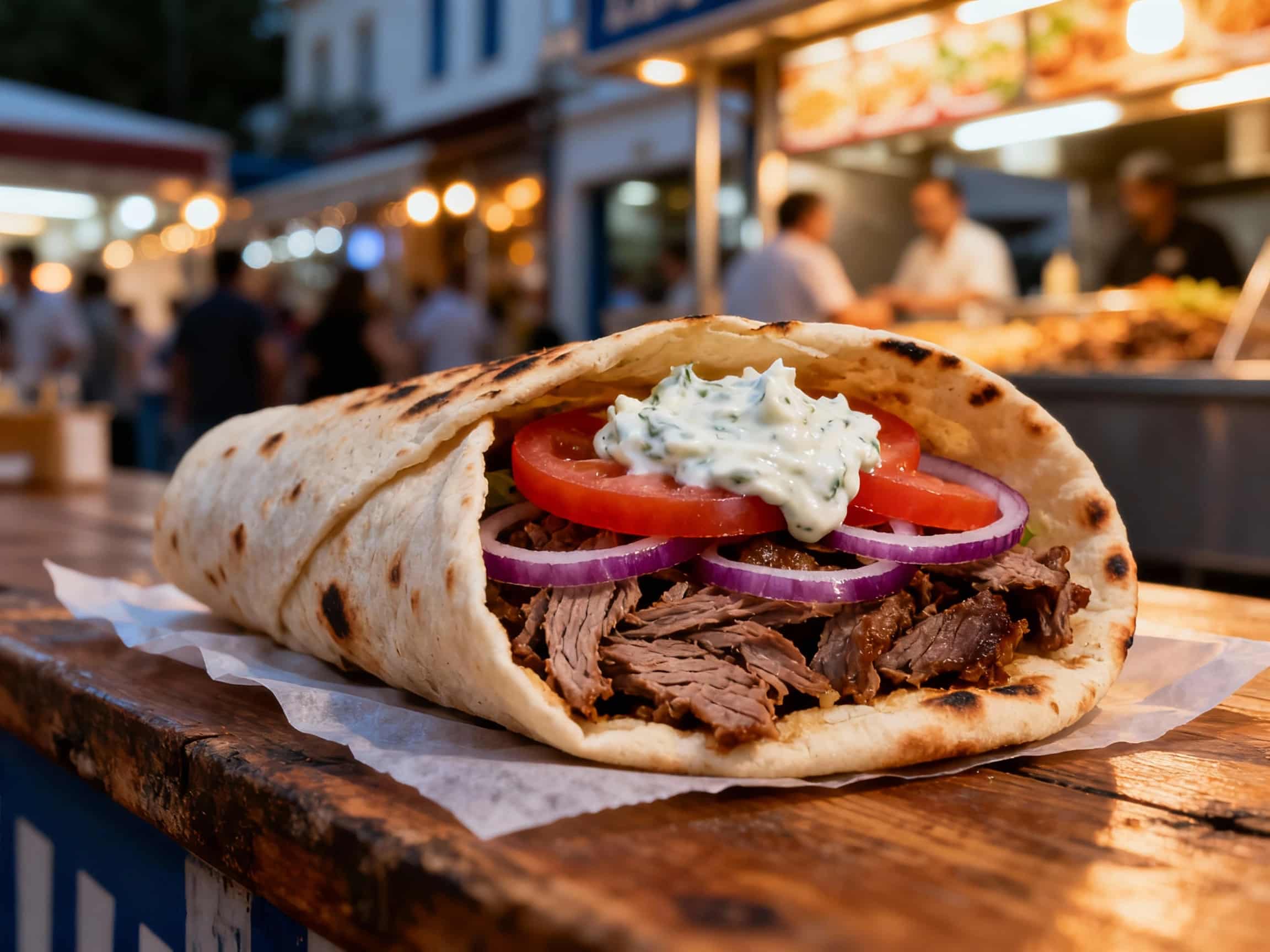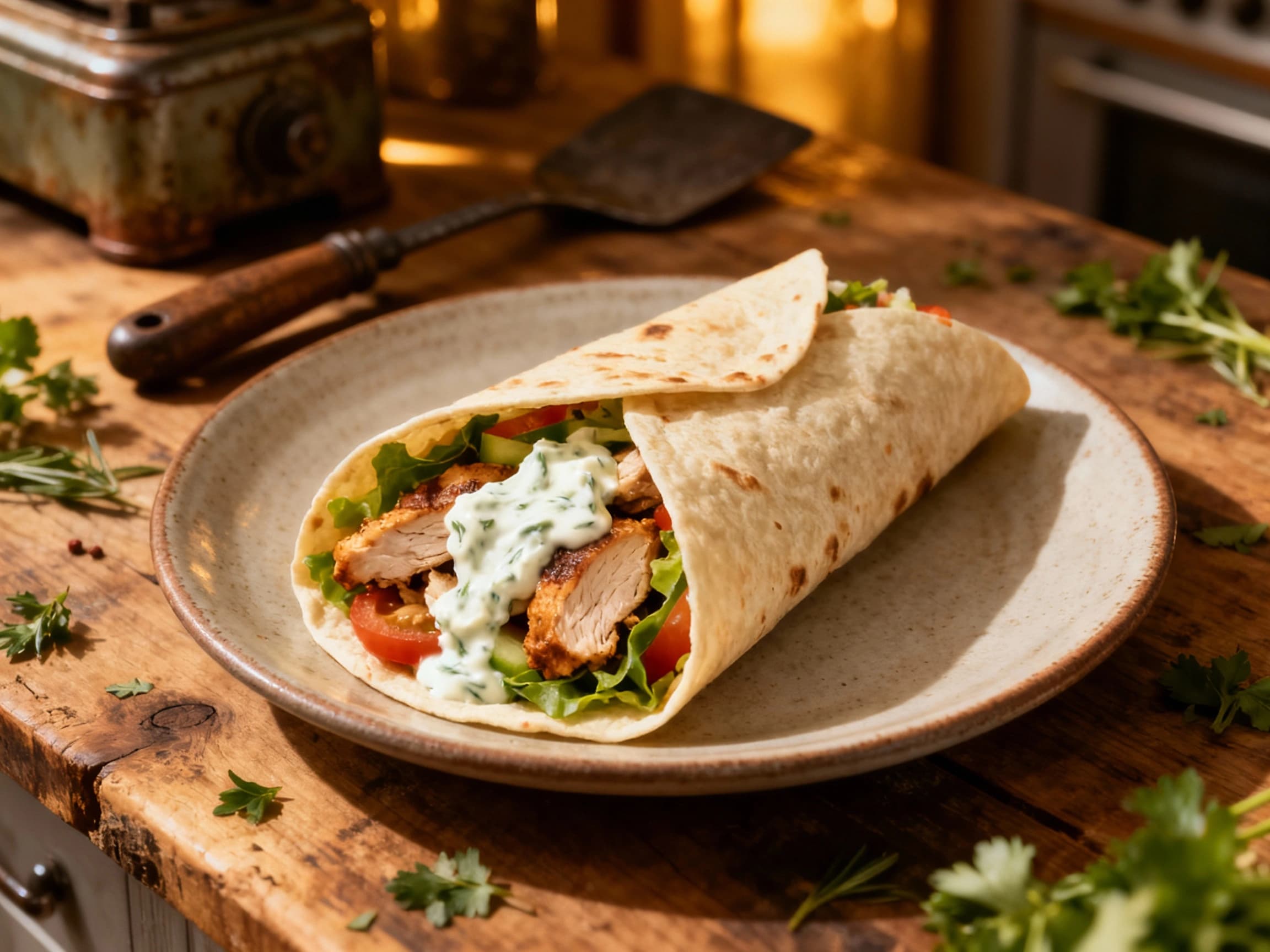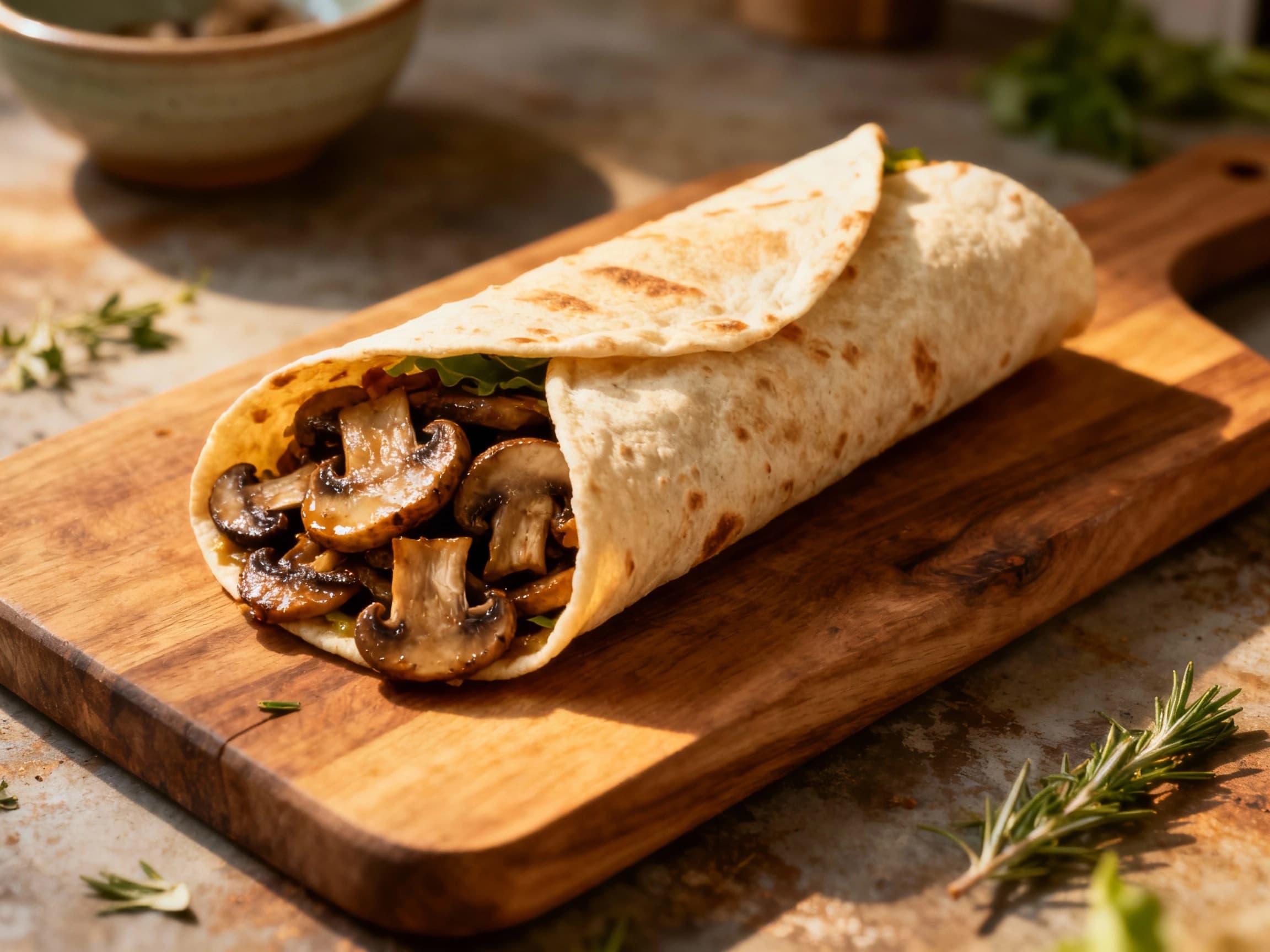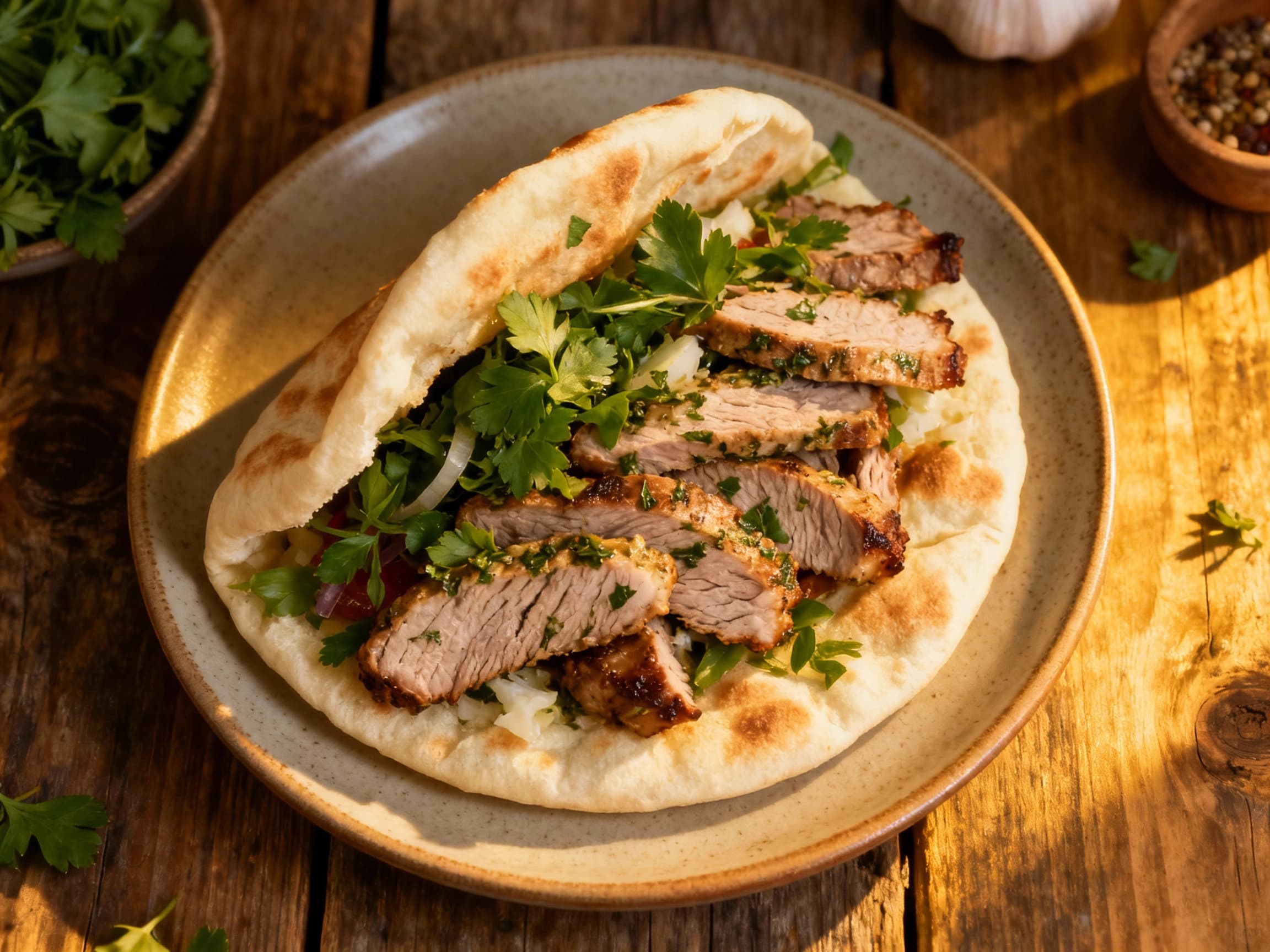
Gyros
γύρος
- Country
- Greece
- Region
- All Greece
- Recipes
- 3 Recipes
Dish information
Gyros, a ubiquitous and beloved Greek street food, is a culinary icon derived from the traditional Turkish döner kebab and Greek souvlaki. The concept of vertically roasting meat dates back to the Ottoman Empire, with the modern gyros taking shape in Greece in the 20th century. Its popularity soared in the post-World War II era, particularly in urban centers like Athens, becoming an accessible and delicious meal for the working class and beyond. The name 'gyros' itself means 'turn' or 'revolve' in Greek, referring to the rotating vertical rotisserie on which the meat (typically pork or chicken, sometimes lamb) is cooked. The meat is marinated in a blend of herbs and spices, layered thinly, and slow-cooked to perfection before being shaved off and served, usually wrapped in a soft, warm pita bread. Accompanying ingredients traditionally include sliced tomatoes, thinly sliced onions, and a generous dollop of tzatziki sauce. While its origins are shared with regional variations across the Balkans and Middle East, the Greek gyros has developed its own distinct identity, characterized by its specific spice blend and the fluffy pita wrap. It remains a symbol of Greek casual dining and a must-try for any visitor to the country.
Timeline
Vertical rotisseries for cooking meat are developed in the Ottoman Empire.
Alexandros Thanassoulas is credited with popularizing the gyro in Athens.
Gyros kiosks and eateries become a common sight in Greek cities.
The popularity of gyros spreads to international Greek restaurants.


